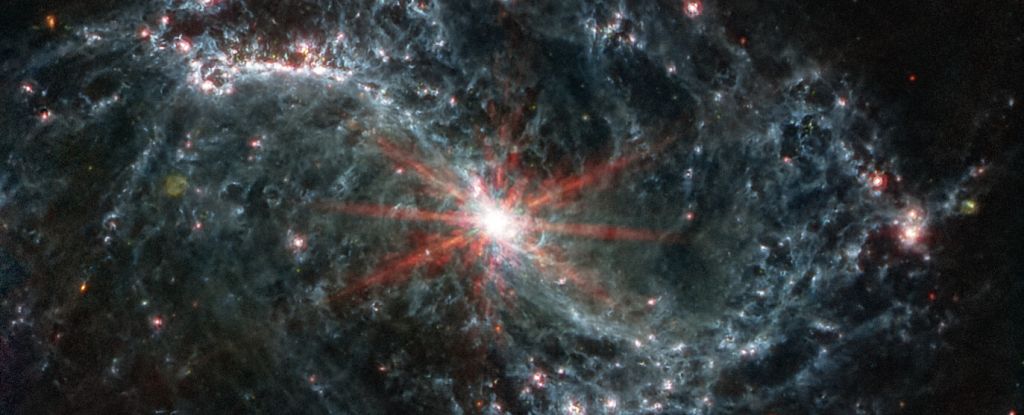JWST discovers six rogue planets without stars
- August 28, 2024
- 0
We think of planets as inherently finite children of their parent stars. But space is a strange and changeable thing; objects don’t always follow the rules we think
We think of planets as inherently finite children of their parent stars. But space is a strange and changeable thing; objects don’t always follow the rules we think

We think of planets as inherently finite children of their parent stars. But space is a strange and changeable thing; objects don’t always follow the rules we think they should. Using JWST, astronomers have caught six planet-sized stragglers unattached to any star, floating freely through interstellar space in the lush, star-forming nebula in the constellation Perseus.
“We’re exploring the limits of the star formation process,” says Adam Langeveld, an astrophysicist at Johns Hopkins University.
“If you have an object that looks like a young Jupiter, is it possible for it to evolve into a star under the right conditions? That’s important context for understanding the formation of both stars and planets.”
There are several ways that space objects can form. Stars are thought to form from the top down: a clump within a sufficiently dense cloud of dust and gas collapses under the influence of gravity, accumulating more and more mass from a disk of material spinning around it until the pressure and heat at its centre rise enough to ignite hydrogen fusion.
At least some planets are thought to have formed through the process of accretion, from material left in the disk when the star was complete. In this scenario, clumps of material begin to stick together electrostatically, then gravitationally, eventually accumulating enough material to form a differentiated core and mantle.
It’s not clear where the boundary between these formation mechanisms lies, and that’s exactly the question that led the researchers to direct JWST to a nebula in Perseus called NGC 1333. It’s a region filled with young star clusters that are just forming from the gas inside.
“We used Webb’s unprecedented sensitivity in the infrared wavelength range to search for the faintest members of a young star cluster to answer a fundamental question in astronomy: How can an object form as a star?” says astrophysicist Ray Jayawardhana of Johns Hopkins University.
“The smallest free-floating objects that formed as stars turned out to overlap in mass with giant exoplanets orbiting nearby stars.”
Astronomers estimate that billions of rogue planets may exist in the Milky Way. Most of them would have formed, as usual, from the leftover food of a young star; turbulent gravitational interactions could free these worlds from their stellar moorings and send them on starless adventures (or be trapped by the gravity of an alien star).
But it is possible that some stray planets could begin to evolve in the same way as stars. We know of a population of objects that resemble stars but do not have enough mass to fuse hydrogen; brown dwarfs, which have a mass of about 13–85 times that of Jupiter, are massive enough to support the synthesis of deuterium, a heavy form of hydrogen that requires lower pressures and temperatures to synthesize. They shine, but dimly.
Simulations suggest that the upper mass limit for bottom-up planet formation via core accretion is less than 10 Jupiters. Furthermore, NGC 1333’s population is young, and such an increase would take some time, as would the gravitational interaction that would bring them together into a large, expansive galaxy.
When JWST detected six objects with masses between five and 10 times that of Jupiter, Langeveld and his team thought they must have formed by gravitational collapse. This was confirmed when they discovered disks resembling miniature baby stars around each of the relatively small objects.
“Our observations confirm that nature creates planetary-mass objects in at least two different ways; from the compression of clouds of gas and dust during star formation, and in disks of gas and dust around young stars, as Jupiter does in our own solar system,” Jayavardhana says.
Interestingly, although JWST is sensitive enough to detect even smaller objects, the researchers did not detect any stray worlds smaller than five Jupiters, suggesting that this is the tipping point. Below this mass, planets are likely to form through core accretion.
The team’s results show that there are many such objects, accounting for 10 percent of all objects in the cluster studied. Discovering these worlds opens up exciting possibilities, blurring the line between a star and its planets and a planet and its moons.
“These small objects, with masses comparable to those of the giant planets, could form their own planets,” says astrophysicist Alex Scholz of the University of St. Andrews in Great Britain. “They could be a nursery for a miniature planetary system on a scale much smaller than our solar system.” The study was published in The Astronomical Journal and is available on arXiv.
Source: Port Altele
As an experienced journalist and author, Mary has been reporting on the latest news and trends for over 5 years. With a passion for uncovering the stories behind the headlines, Mary has earned a reputation as a trusted voice in the world of journalism. Her writing style is insightful, engaging and thought-provoking, as she takes a deep dive into the most pressing issues of our time.